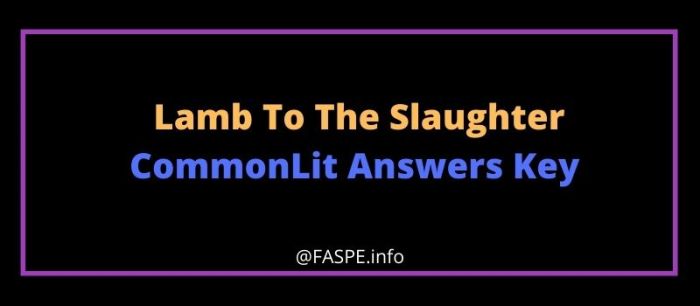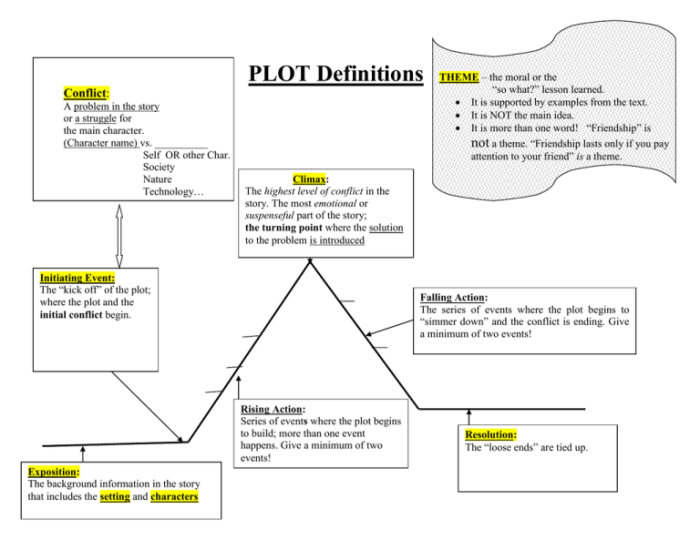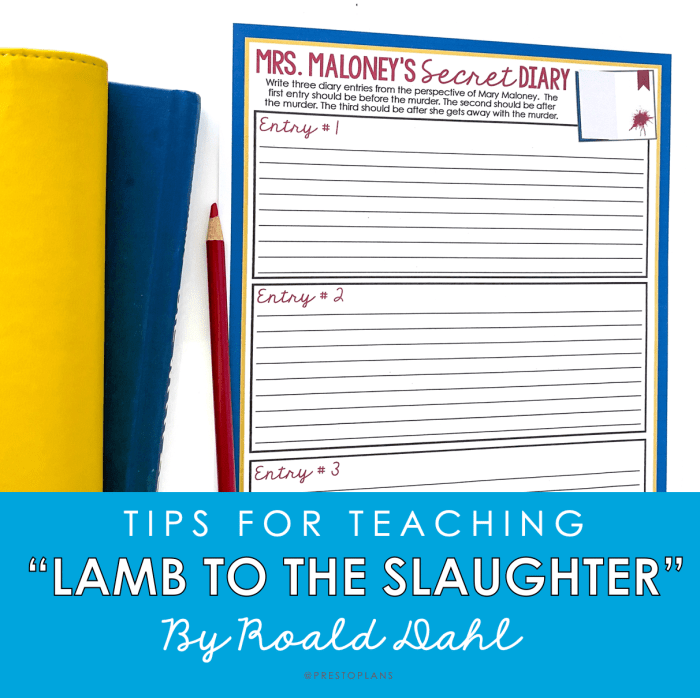Lamb to the Slaughter CommonLit Answers provides a comprehensive exploration of Roald Dahl’s gripping short story, offering insightful analysis and thought-provoking commentary. Delving into the intricate tapestry of the narrative, this guide unravels the complexities of character, symbolism, and theme.
Through a meticulous examination of the text, Lamb to the Slaughter CommonLit Answers illuminates the profound insights and literary artistry embedded within Dahl’s masterpiece, empowering readers to delve deeper into the story’s enduring significance.
Story Overview: Lamb To The Slaughter Commonlit Answers

In “Lamb to the Slaughter,” Roald Dahl tells the story of Mary Maloney, a pregnant housewife whose husband, Patrick, comes home with the unexpected news that he is leaving her. Devastated and filled with rage, Mary bludgeons Patrick to death with a frozen leg of lamb.
She then carefully cleans up the crime scene and cooks the lamb for the police officers who arrive to investigate Patrick’s disappearance.
Character Analysis: Mary Maloney

Mary Maloney is a complex and enigmatic character. Initially, she appears to be a stereotypical 1950s housewife: devoted to her husband, submissive, and unassuming. However, as the story progresses, we see a different side of Mary. She is capable of great violence and deception, and she is ultimately driven by a desire for revenge.
Mary’s character development is particularly evident in the way she reacts to Patrick’s news. At first, she is shocked and devastated. However, as she begins to process the situation, her anger and resentment grow. She realizes that Patrick has been taking her for granted, and she is determined to make him pay.
Symbolism and Motifs
Dahl uses a number of symbols and motifs in “Lamb to the Slaughter” to create a sense of atmosphere and to explore the story’s themes.
- The lamb:The lamb is a symbol of innocence and vulnerability. It is also a symbol of the life that Mary and Patrick have together. When Mary kills Patrick, she is also destroying their relationship.
- The kitchen:The kitchen is a symbol of the domestic sphere. It is a place where women are traditionally expected to be subservient to men. However, in “Lamb to the Slaughter,” Mary uses the kitchen to assert her power. She cooks the lamb for the police officers, and she uses the kitchen as a stage to perform her act of revenge.
- The color red:The color red is associated with blood and violence. It is also a symbol of passion and anger. The color red appears throughout the story, from the blood on the lamb to the red dress that Mary wears.
Themes
Dahl explores a number of themes in “Lamb to the Slaughter,” including:
- The roles of women:Mary Maloney challenges the traditional roles of women in the 1950s. She is not a submissive housewife, and she is not afraid to use violence to get what she wants.
- Violence:Violence is a central theme in “Lamb to the Slaughter.” Mary’s act of violence is both shocking and understandable. It is a reminder that violence is never the answer, but it can be a way of asserting one’s power.
- The nature of evil:Mary Maloney is a complex character. She is not a monster, but she is capable of great evil. The story raises questions about the nature of evil and the potential for evil in all of us.
Narrative Techniques
Dahl uses a number of narrative techniques in “Lamb to the Slaughter” to create suspense and to build tension. These techniques include:
- Foreshadowing:Dahl uses foreshadowing to hint at the violence that is to come. For example, the story opens with Mary preparing a leg of lamb for dinner. This foreshadows the fact that she will later use the lamb to kill Patrick.
- Irony:Dahl uses irony to create a sense of suspense. For example, the police officers who arrive to investigate Patrick’s disappearance are completely unaware of the fact that Mary is the one who killed him.
- Point of view:The story is told from Mary’s point of view. This allows the reader to see the events of the story through her eyes and to understand her motivations.
Comparison to Other Works, Lamb to the slaughter commonlit answers
“Lamb to the Slaughter” is similar to other short stories that explore the themes of violence and the roles of women. One such story is “The Yellow Wallpaper” by Charlotte Perkins Gilman. Both stories feature female protagonists who are driven to violence by the oppressive circumstances of their lives.
However, “Lamb to the Slaughter” is unique in its use of black humor. Dahl’s story is both suspenseful and funny, and it leaves the reader with a sense of unease. The story is a reminder that even the most ordinary people are capable of great violence.
Q&A
What is the central conflict in Lamb to the Slaughter?
The central conflict revolves around Mary Maloney’s internal struggle to reconcile her love for her husband with her desire for revenge after discovering his infidelity.
How does the symbolism of the lamb contribute to the story’s meaning?
The lamb symbolizes both Mary’s innocence and vulnerability, as well as the violence and brutality that she is capable of.
What is the significance of the ending of the story?
The ending leaves the reader with a sense of ambiguity, questioning the nature of justice and the consequences of Mary’s actions.


